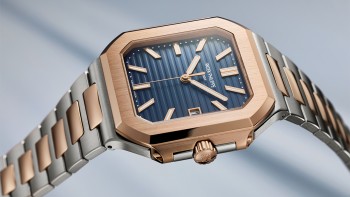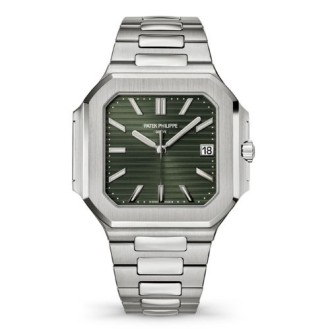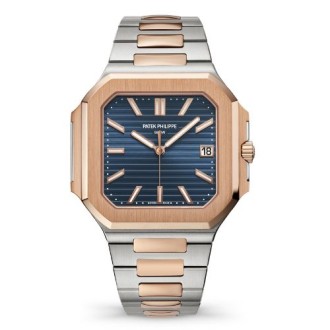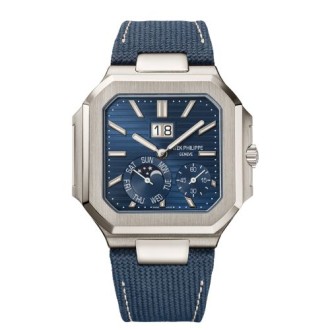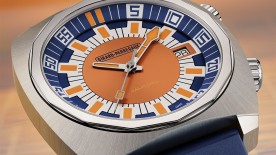The 1970s stand out as a pivotal era in the evolution of watch design. This uninhibited decade is really in a category of its own. In 1972 Audemars Piguet established itself as a pioneer, launching the concept of sport-chic watchmaking with the Royal Oak – a steel sports watch sold at a premium price – and revolutionising modern watchmaking. In 1976 Patek Philippe etched the sport-chic trend permanently in horological history with the Nautilus. This masterpiece, an instant icon that attracted universal acclaim, is immediately recognisable by its distinctive cushion shape, bridging the gap between square and round.
Today the Nautilus is more than an icon: it’s a legend. And now – enter the Cubitus, heralded as the new messiah of sport-chic watchmaking. Crafted by watchmaking royalty, it’s welcome news to aficionados of a style that hasn’t gone out of fashion in half a century. Its name, Cubitus – Latin for ‘cube’ – speaks volumes. Thierry Stern, the current head of the manufacture, makes no attempt to hide his enthusiasm. He always wanted Patek Philippe’s current collection to have a square watch, and now he finally has his wish. The rounded corners of the Nautilus case give way to the bevelled edges of the Cubitus. But despite this significant difference in shape between the two sisters, they maintain a striking family resemblance.
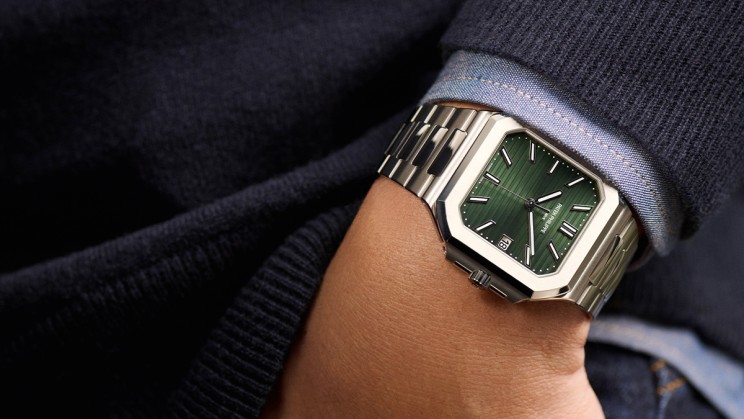
The metal bracelet remains integrated, retaining its characteristic central link. The dial features the famous embossed horizontal pattern. These two elements place the Cubitus firmly in the Nautilus lineage. A new watch by Patek Philippe is a rare occurrence, and success seems all but guaranteed. The Cubitus is currently available in three versions, each measuring 45 mm to a side, all powered by in-house automatic movements. Two simpler, delightfully vintage pieces feature the base calibre 26-330, introduced in 2019. This movement boasts a stop-seconds function for precise time-setting and other technical innovations related to the winding system. The watches come with three central hands and a date window. One is in steel with an olive green dial, while the other is two-tone steel and rose gold with a blue dial. The most complicated and luxurious piece, in platinum, houses the 240 PS CI J LU calibre. This movement, the subject of six patent applications, manages energy for the various displays and their simultaneous jumps (completed in 18 milliseconds). It features a large date, instantaneous day and moon phase displays, and a small seconds counter.
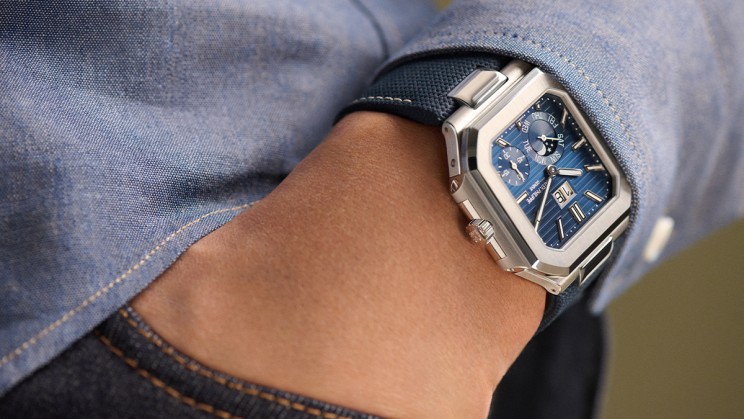
It is to be hoped that these three budding icons will remain accessible to the average fine watch enthusiast, rather than becoming virtually unobtainable objects of rumour and myth. The Cubitus is already available, starting at CHF 35,000 for the automatic steel version with an olive green dial. These three irresistible new watches are no doubt only the first members of a family that is sure to grow. We can expect not only additional three-handed versions, but also more complicated variants. Patek Philippe is an acknowledged virtuoso of complications, and we would not be surprised to see a Cubitus chronograph in the not-too-distant future.
